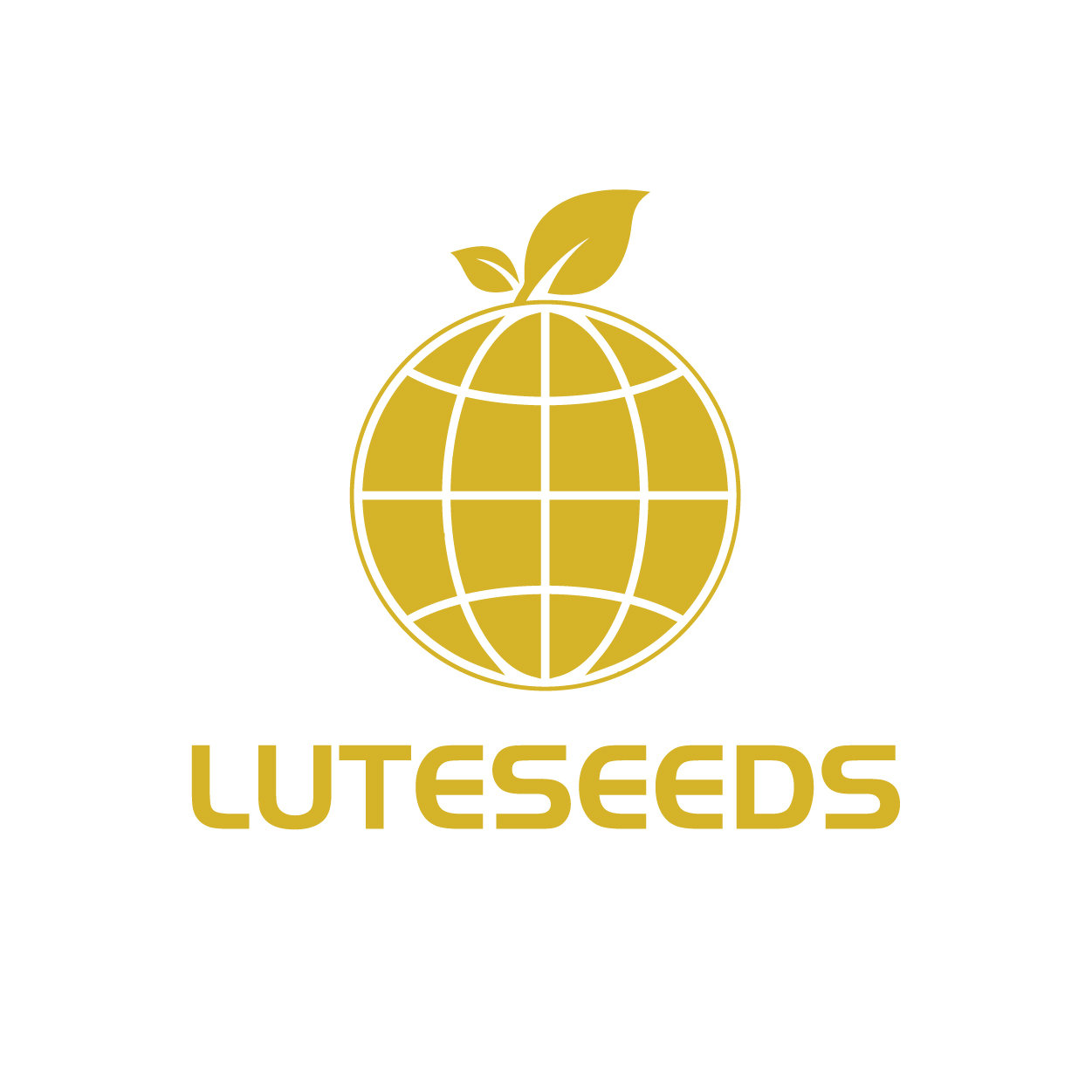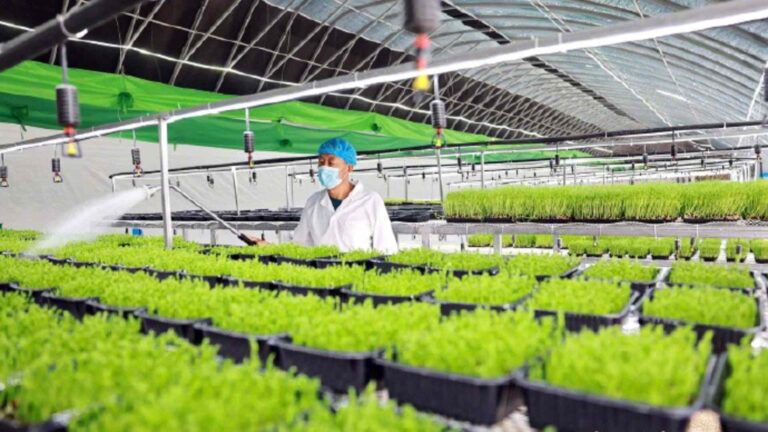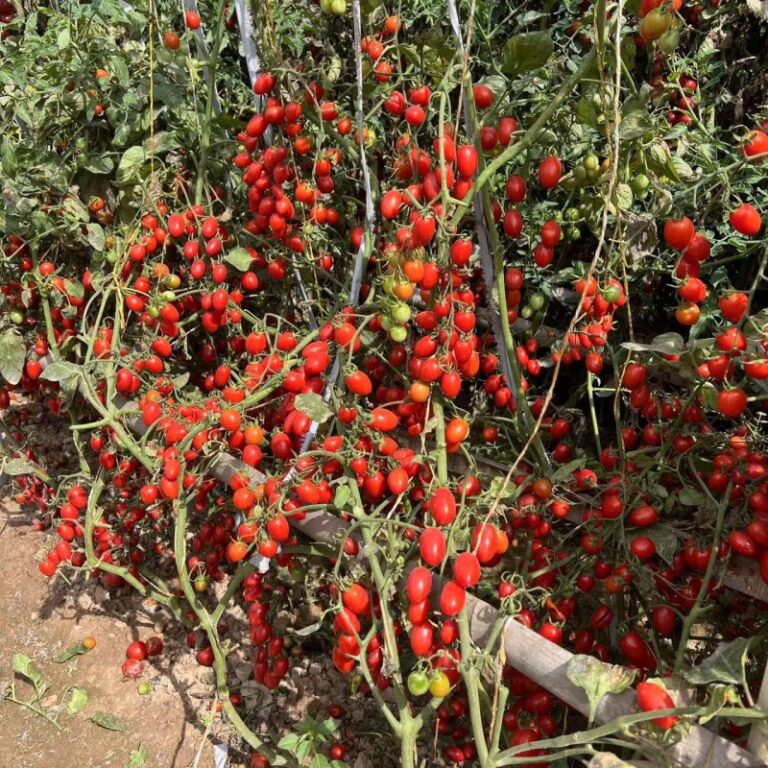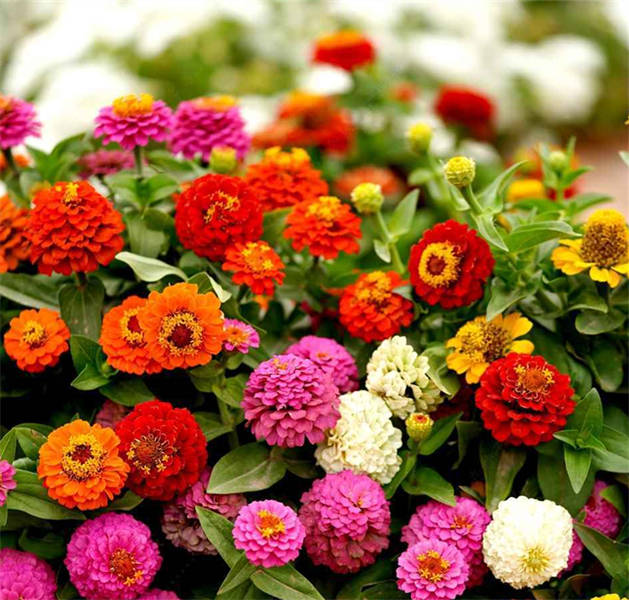The characteristics of plug seedlings are that each seedling has an independent space, does not compete with each other for water and nutrients, the seedlings have complete root systems, the survival rate after transplantation is close to 100%, and the growth and development after transplantation are fast and neat, with a high commercial rate. Therefore, the application of plug seedlings in flower seedlings is a new development trend. Below are the flower plug seedling technology from luteseeds team China flower seeds supplier.
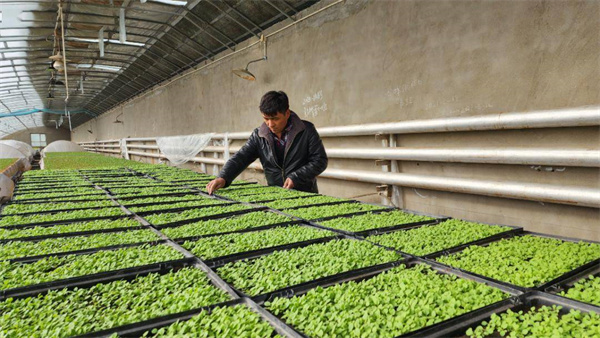
Flower seeds in cultivation
Why do we need to use plug seedlings to grow flower seeds?-China flower seeds supplier
The small size and high price of flower seeds are a prominent problem in flower production. So our aim in luteseeds bulk annual flower seeds breeding factory is to help dealers distributors and wholesalers optimize these planting issues.
- Because the seeds are small, the seedling stage often grows slowly and is delicate. The seedling stage takes too long and the seedling rate is low.
- The high price of seeds leads to high costs, which affects production profits and brings losses and risks to flower companies.
The use of hole tray seedling cultivation can greatly improve the germination rate and uniformity of flower seedlings, shorten the cultivation time, and increase the commodity price and commodity rate of flowers. Especially for potted flowers and flower bed seedlings that use small seeds to raise seedlings, this is undoubtedly a very important technological progress.
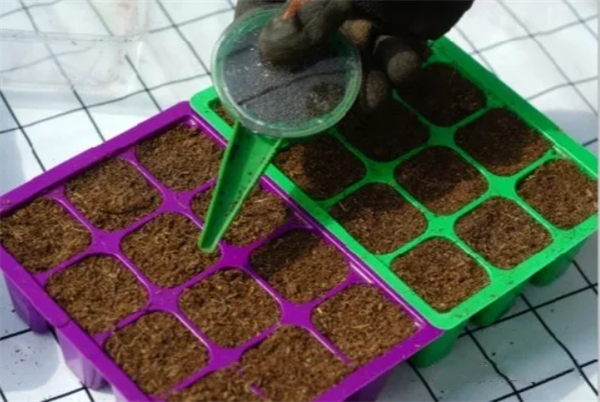
(1)Four stages of the flower seed growth period
Why is it necessary to divide the growth period of plug seedlings into four stages?
The reason why seedling cultivation is divided into four stages is because the growth status of these four stages and the required environmental and management conditions such as temperature, humidity (relative humidity), light, and fertilizer are different.
The management of these four stages has a great impact not only on the development of the seedlings but also on the shape, number of flowers, and production cycle.
For example, in Cineraria flower seeds, if the temperature exceeds 28°C in the second stage, it will easily cause the hypocotyl to be too elongated and prone to lodging. If the four-season crabapple cannot be fertilized in time during the second and third stages, subsequent fertilization will also cause growth retardation for more than a month.
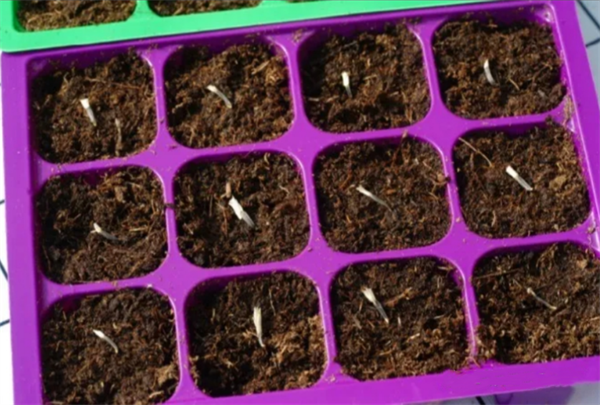
The four stages of the growth period of plug seedlings
The first stage is from sowing to the time when the primary root (radicle) of the seed protrudes from the seed coat, which is the so-called “germination” period.
- The main characteristics of the germination period are the need for higher temperatures and humidity. The higher temperature is relative to the next three stages.
- The temperature required for seed germination is generally between 21°C and 28°C, with most optimum temperatures between 24°C and 25°C. A constant temperature can promote the absorption of water by the seeds, relieve dormancy, and activate life.
- Higher humidity can meet the seed’s need for water. First, it softens the seed coat, increases permeability, and provides necessary oxygen for the development of the seed embryo. Second, it serves as a solvent for the seed’s biochemical reactions, promoting the completion of its biochemical reactions. A new life form replaces a potential life state.
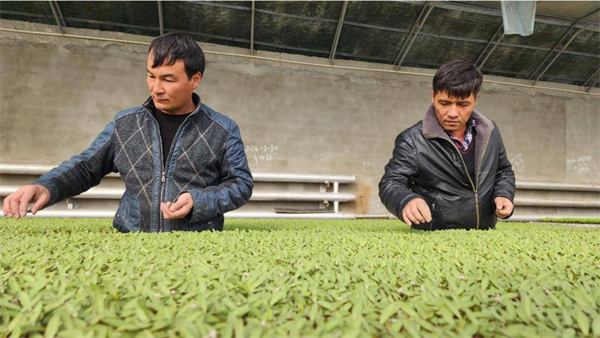
In the second stage, after the seeds germinate, the hypocotyl elongates, the terminal bud breaks through the matrix, the epicotyl elongates, the cotyledons expand, and the root system, stem and cotyledons begin to enter the development state.
- The management focus of the second stage is to dwarf and promote the growth of hypocotyls.
- If the hypocotyls grow too fast, the seedlings will become leggy. To promote the growth and dwarfing of seedling hypocotyls, the dominant factors of the cultivation environment must be strictly controlled, such as temperature, humidity, light, etc.
- The ideal hypocotyl length for the cotyledons of seedlings is 0.5cm, and if it is more than 1.0cm, it will be too long.
- If the hypocotyl is too long, when the true leaves begin to stretch, as the leaf area of the true leaves increases and the number of leaves increases, its mechanical support will be insufficient and lodging will easily occur. When the hypocotyls are too long and cause lodging, they cannot be recovered. Therefore, the dwarfing and strengthening of the hypocotyls are the key to improving the seedling rate.
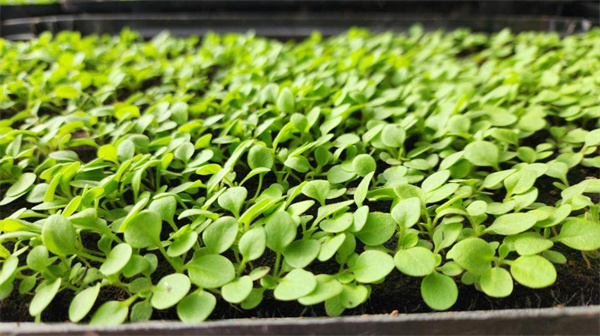
The third stage is mainly the growth and development of true leaves. The management focus at this stage is water and fertilizer.
Moisture management priorities
- The focus of moisture management is to maintain the moisture balance during the growth period, avoid the substrate from becoming dry and wet, and provide the appropriate amount of moisture at the appropriate time.
- Under artificial watering conditions, first observe the dryness, moisture and evaporation conditions of the substrate to determine the watering time and amount.
- Under automatic sprinkler irrigation conditions, water three times a day, and the amount of water supplied each time should reach approximately 60% of the water holding capacity of the substrate.
- Watering times are between 8 o’clock, 11 o’clock and 14-15 o’clock respectively. If the seedlings are not wilting after 16:00, there is no need to water them.
- Reducing nighttime humidity, slowing down the elongation of stem nodes, and dwarfing seedlings are the goals pursued by management.
Seedlings entering the third stage should start fertilizing.
- The initial fertilizer concentration is 2500-3000 times (or 100-150 ppm) which is sufficient. When the first two true leaves are fully expanded, the fertilizer concentration is increased to 2000 times.
- Choose a formula with lower nitrogen content (N:P:K=15:10:30) for the ratio of fertilizer nitrogen, phosphorus and potassium to reduce the rapid growth of leaf area and reduce its transpiration.
- Excessive nutrition will not only easily cause leggy and weak seedlings, but also increase the conductivity of the substrate and affect the normal development of the root system.
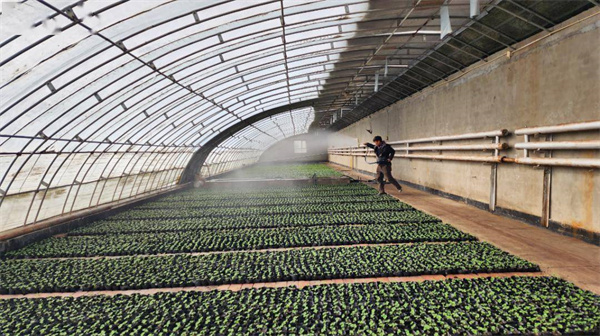
When the seedlings grow to 3-4 true leaves, they have reached the fourth stage.
- Seedlings at this stage are ready for transplanting or sale. Before transplanting, it is necessary to properly control water and fertilize to avoid wilting and affecting its normal development. For more details, welcome to luteseeds bulk annual flower seeds breeding factory
(2)Plug trays and substrate are necessary material conditions for plug seedling cultivation.
How should we choose the substrate?
- There are many types of substrates, and the proportions of substrates are also different to meet the needs of different plant seedlings.
- The general rule is that the smaller the seed, the finer the substrate required.
- The main components of the substrate include peat soil (CSP), coconut bran, perlite, vermiculite, etc.
- The basic requirements of the substrate are sterility, no insect eggs, debris and weed seeds, good water retention and air permeability, pH value 5.5-6.5, EC value lower than 0.75mmhos/cm3. In production, peat and perlite (or vermiculite) are often mixed in a ratio of (3-3.5):1.
- In principle, the seedling substrate is a new substrate and no old materials are used. Even so, it is best to disinfect it with 600-1000 times of carbendazim or chlorothalonil before sowing.
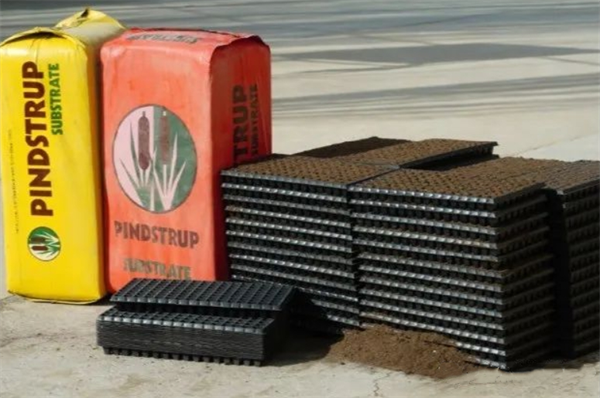
How to choose the hole grid and shape of the seedling plug tray?
- The hole grid and shape of the plug tray are closely related to the growth of the seedling root system. The hole grid has a large volume, a large substrate capacity, a large amount of water and nutrient storage, and a large ability to regulate the supply of water to the seedlings. In addition, it can relatively improve permeability, which is also beneficial to the development of root systems.
- However, the larger the cells are, the smaller the number of cells per unit area of the plug tray will be, which will affect the output per unit area, and the price or cost will increase.
- The specifications of plug trays include 288 mesh, 200 mesh, 128 mesh or 50 mesh, which are mainly determined by the length of seedling cultivation time, the depth of the root system and the specifications of commercial seedlings (transplanted seedlings).
- Used plug trays must be disinfected before reuse. The common method is to wash or spray with 600 times liquid carbendazim, 800-1000 times liquid Carbendazim and other fungicides, and then rinse with clean water 2-3 times.
How to grow seedlings in plug trays?
- Fill the plug tray with the mixed matrix or imported matrix, which can be operated mechanically or manually.
- Pay attention to filling each hole evenly as much as possible, and press it gently so that the middle of the matrix is slightly lower than the surrounding areas.
- The matrix should not be overfilled and should be slightly lower than the height of the holes in the hole tray so that the outline of each hole can be clearly seen.
- The day before sowing, the substrate should be wetted to the point where it is just thoroughly watered, that is, there is water seeping out from the bottom of the holes.
- The wetting method uses automatic intermittent water spraying or manual water spraying multiple times to allow water to slowly penetrate into the matrix.
- For seedling cultivation in plug trays, 1-3 seeds are generally placed in each hole. Whether it is mechanical sowing or manual sowing, the seeds must fall in the center of the hole.
- After sowing, larger seeds should be covered with a layer of substrate (vermiculite, etc.), while small seeds need not be covered with soil.
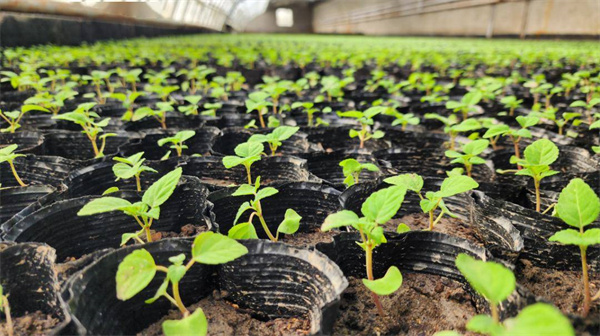
(3)The importance of certain environmental conditions for plug seedling cultivation
Plug seedling cultivation needs to be completed under certain environmental conditions, such as temperature, humidity (watering), light, fertilizer, etc.
A.Temperature is the primary environmental condition that determines seedling cultivation
- When the temperature of the greenhouse is lower than the germination temperature, heating is required. The heating methods include air heating and substrate heating. Air heating such as fuel heater heating, water heating pipe heating, etc. And substrate heating such as geothermal heating.
- If the temperature in the greenhouse is too high, you can choose a wet curtain fan cooling system to cool down. If the temperature difference is within the range of 2℃-3℃, you can use other greenhouse systems and devices such as shading, ventilation, spraying and other systems and devices to help cool down. This can Save production costs.
- But the biggest problem is that from the first stage to the fourth stage is the temperature drop requirement. If you deviate from seasonal changes and rely solely on mandatory temperature regulation, it will easily lead to increased costs, so production must be reasonably arranged according to seasonal changes.
B.Proper humidity and appropriate spraying measures are the key to cultivating strong flower seedlings
- From the first stage when the relative humidity is close to 100%, to the fourth stage when the substrate is dry and wet, and watering is as little as possible as long as wilting does not occur. It also determines that the management of humidity and moisture is a complex process.
- Correctly grasping the four stages of seedling production and gradually reducing the moisture content of the substrate is an important management content. Timely adjustment of the number and time of automatic spraying (mist) can control humidity and moisture.
- The amount of evaporation is small, so spray less water when the air humidity is high. On the contrary, spray more water. When spraying the last time in the afternoon, make sure there are no water droplets on the leaves at night.
C.Different flowers have different light requirements
- Calendula requires light conditions to germinate, and cyclamen requires darkness. Most flower seeds are in between, that is, they can germinate under normal natural conditions.
- But after the second stage, it must be exposed to light. Depending on the temperature, it can be shaded appropriately. The degree of shade ranges from 40% to 60%, which is determined according to the ecological characteristics of different seeds.
- For example, Four Seasons Begonia requires stronger shade. Salvia splendens and Celosia can be grown without any shade at all. Cineraria can block about 30% of the sunlight.
- As each stage progresses, the light required gradually increases. This is a basic rule.
D. The importance of fertilizing after seedling raising
- Fertilization There is basically no fertilizer or very little fertilizer in the substrate for seed seedling cultivation, which makes fertilization after seedling cultivation particularly important.
- Generally, seeds must be fertilized from the third stage, but some seeds must be fertilized from the second stage, otherwise the seedling raising time will be greatly extended. For example, four-season crabapples and cineraria fall into this category. The rule can be recognized as that longer seeds in the second stage need to be fertilized.
- The amount of fertilizer applied gradually increases from low concentration to high concentration. Using the nitrogen fertilizer concentration as a standard, you can start from 100ppm and increase by 50-100ppm every week. The amount of fertilizer required by the seedlings can be judged based on the growth and leaf color of the seedlings.
- It is best to use liquid fertilizer when growing seedlings in plug trays. Because it is easier to control its concentration. If conditions do not permit, you can also use slow-acting controlled fertilization. Do not use volatile nitrogen fertilizers to avoid damage to the seedlings.
